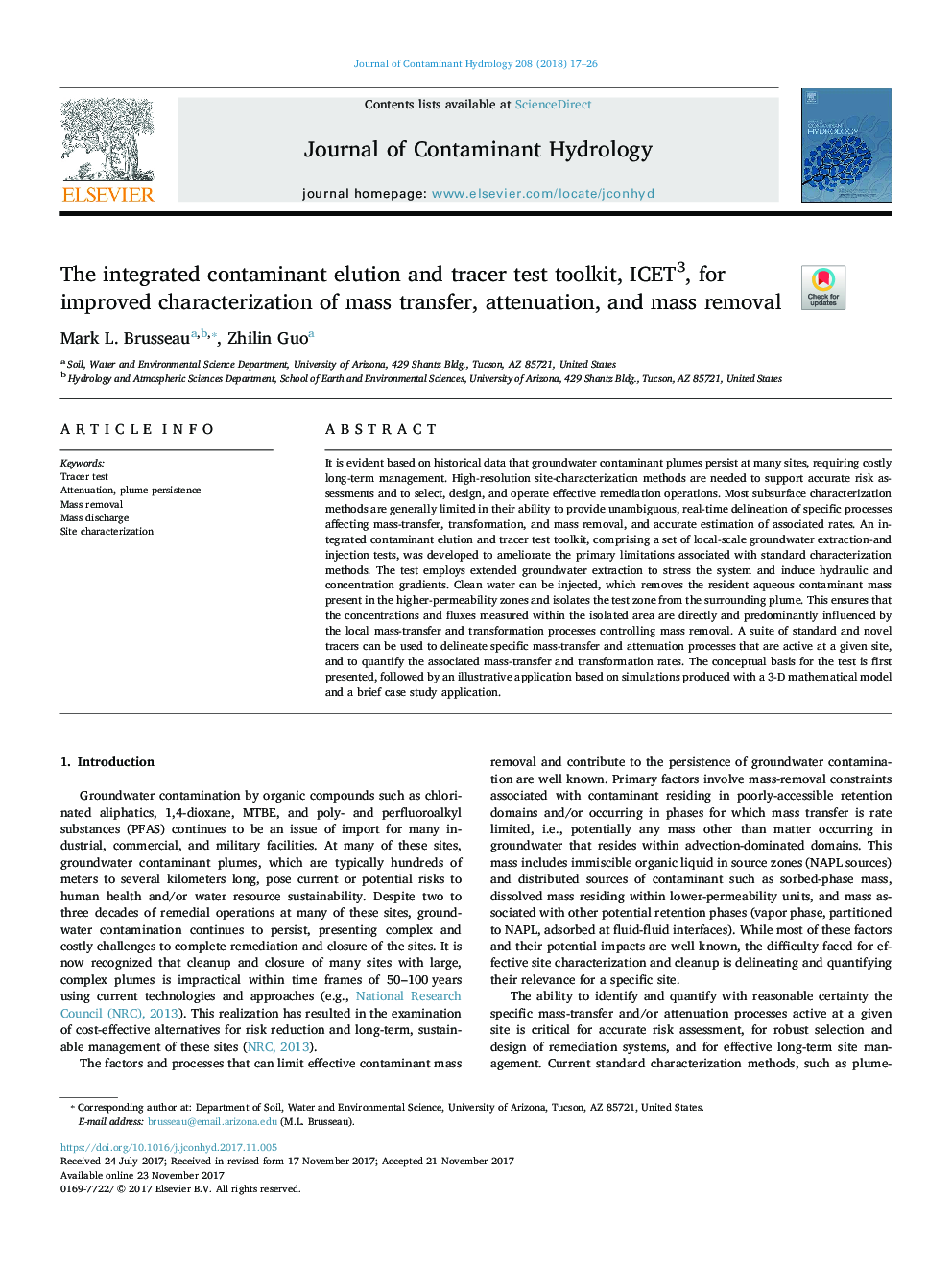| Article ID | Journal | Published Year | Pages | File Type |
|---|---|---|---|---|
| 8885852 | Journal of Contaminant Hydrology | 2018 | 10 Pages |
Abstract
It is evident based on historical data that groundwater contaminant plumes persist at many sites, requiring costly long-term management. High-resolution site-characterization methods are needed to support accurate risk assessments and to select, design, and operate effective remediation operations. Most subsurface characterization methods are generally limited in their ability to provide unambiguous, real-time delineation of specific processes affecting mass-transfer, transformation, and mass removal, and accurate estimation of associated rates. An integrated contaminant elution and tracer test toolkit, comprising a set of local-scale groundwater extraction-and injection tests, was developed to ameliorate the primary limitations associated with standard characterization methods. The test employs extended groundwater extraction to stress the system and induce hydraulic and concentration gradients. Clean water can be injected, which removes the resident aqueous contaminant mass present in the higher-permeability zones and isolates the test zone from the surrounding plume. This ensures that the concentrations and fluxes measured within the isolated area are directly and predominantly influenced by the local mass-transfer and transformation processes controlling mass removal. A suite of standard and novel tracers can be used to delineate specific mass-transfer and attenuation processes that are active at a given site, and to quantify the associated mass-transfer and transformation rates. The conceptual basis for the test is first presented, followed by an illustrative application based on simulations produced with a 3-D mathematical model and a brief case study application.
Related Topics
Physical Sciences and Engineering
Earth and Planetary Sciences
Earth-Surface Processes
Authors
Mark L. Brusseau, Zhilin Guo,
